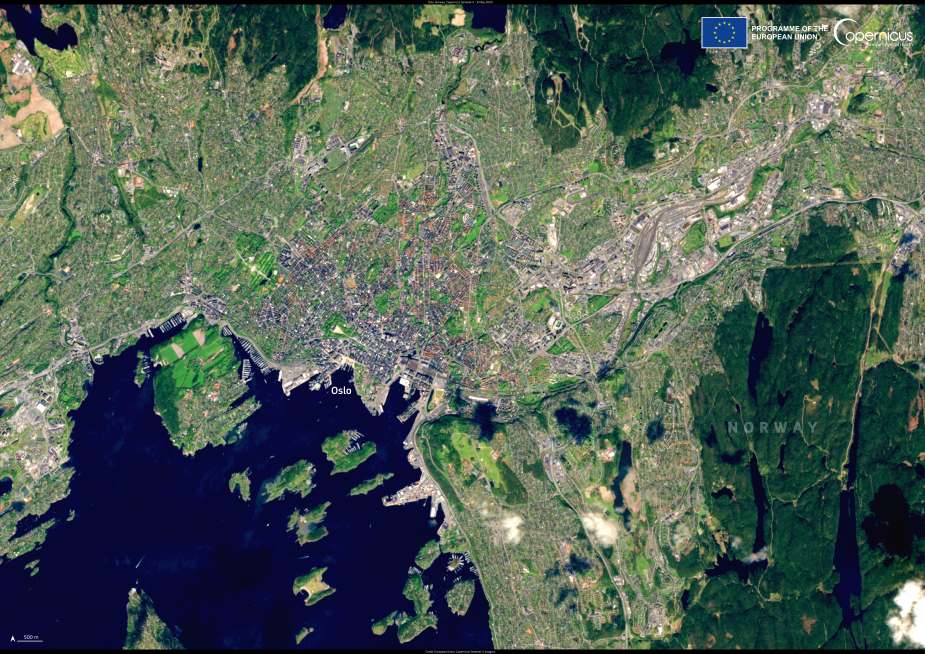Oslo, Norway, has emerged as Europe’s greenest capital in terms of tree coverage, with an impressive canopy cover of just over 72%. The European Forest Institute released the findings earlier this month, based on a comprehensive assessment that included data from the Copernicus Land Monitoring Service (CLMS).
This dense urban tree cover is more than just visually striking — it plays a vital role in making Oslo a healthier place to live. Researchers highlight that extensive greenery in urban environments helps filter air pollutants, reduce heat during the summer months, and support mental well-being for residents. These benefits become increasingly important as European cities respond to the challenges of climate change and urban expansion.

This image, acquired by one of the Copernicus Sentinel-2 satellites on 6 May 2025, shows Oslo from above.
The CLMS contributes critical data for urban planning, environmental management, and monitoring changes in land use. By tracking ecosystem health and patterns of urban growth, the service helps cities like Oslo implement more sustainable and climate-resilient policies — an approach that may soon be essential for other European capitals aiming to catch up.
Featured image credit: European Union, Copernicus Sentinel-2 imagery



